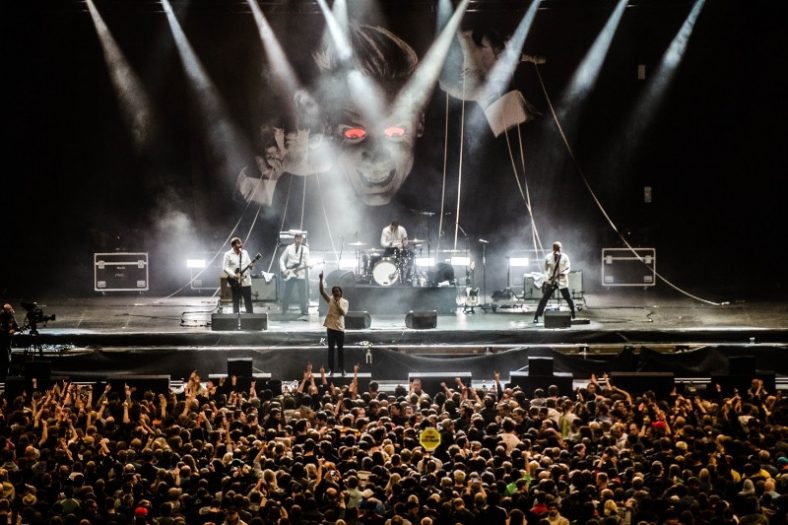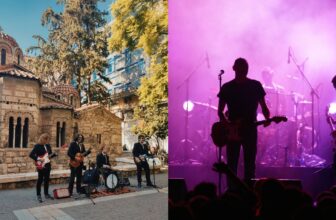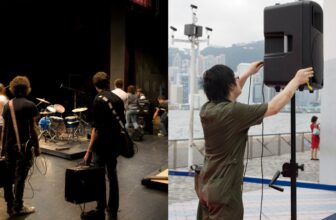How Much Do Artists Get Paid for Festivals?

Artists get paid anywhere from nothing to $4 million to perform at a festival. Major acts can get paid millions for a single show, supporting acts can get as much as $25K, and lesser-known artists may get nothing but free festival tickets!
Millions of people attend the largest music festivals in the world, which can be extremely profitable. They’re arguably the most sensational live-music experience one can have. However, music festivals aren’t where musicians (big and small) get the big bucks. Counterintuitively, festival fees can be quite underwhelming.
Because music festivals (especially the most reputable ones) are such major events, some of the more prestigious have enough leverage to book live musicians without paying them a fortune. According to Far Out magazine, for instance, The Rolling Stones lost money at their iconic 2013 Glastonbury appearance. Years later, they were making a reported $10 million a night with their 12-city “No Filter” tour.
The going gets even tougher for smaller artists. Some up-and-coming bands perform at music festivals at a loss because they want to reach a larger audience. More bands are playing for free (or almost nothing) at your favorite music festival than you may think.
Contents
- How much do headlining artists get paid for festivals?
- How much do mid-range international artists get paid for festivals?
- How much do underground and little-known artists get paid for festivals?
- Why do music festivals pay so little money to artists?
- What are the costs of performing at a music festival?
- Summary
How much do headlining artists get paid for festivals?
Lady Gaga and Oasis (with a $4 million cachet each) are among the best-paid festival artists in the world. However, it’s not unusual for major music acts to get paid $1 million or more for headlining a music festival.
Below, you can find some examples of how much top artists get paid to perform at a music festival:
| Lady Gaga | $4 million |
| Oasis | $4 million |
| Radiohead | $3 million |
| The Rolling Stones | $1.5 million |
| Eminem | $1 million |
| Calvin Harris | $950K |
| Drake | $900K |
| Muse | $750K |
Naturally, there are plenty of undisclosed festival payments that could’ve made it to the list, these are just the ones that became public. You should also keep in mind that top artists’ payments vary dramatically from festival to festival. According to Metro, for example, major acts such as Paul McCartney and Coldplay got as little as $240K for their performances at Glastonbury Festival.
How much do mid-range international artists get paid for festivals?
Mid-range international artists with a cult following can get paid anywhere between $10K and $250K to perform at a music festival. Depending on the festival, these artists may accept sums much smaller than this. In some instances, they may even end up playing for free.
Please keep in mind that the artists we’re talking about will still have considerable status and will be seen as wildly successful to most people. The label of ‘mid-range’ is simply a relative term to differentiate these acts from the multi-million dollar top earning acts. Bands like The 1975 and Two Door Cinema Club have fans all over the world and have been met with widespread critical acclaim by the press.
Rob Smith, a music-industry professional from London, disclosed some of the fees that these types of bands would receive to perform at a festival. While top mainstream acts such as Oasis asked for multi-million dollar fees, midrange performers like Jamie XX and Two Door Cinema Club didn’t command quite as much, but still would receive a big payout.
Here are some examples of how much money that these artists can get paid for a festival:
| Jamie XX | $350K |
| The 1975 | $220K |
| Rudimental | $103K |
| Two Door Cinema Club | $90K |
| Sigma | $30K |
How much do underground and little-known artists get paid for festivals?
Little-known artists often get less than $500 to perform at a festival. Artists with a nice local fanbase can get as much as $3K (if they’re lucky). Unfortunately, it’s common for small artists to perform at festivals for free. They do it for promotion, status, and networking.
SXSW makes for a flagrant example of how little small artists get paid for festivals. According to Stereogum, artists are forced to choose one of two options: either getting a pretty insignificant fee of $100 (for solo artists) or $250 (for bands) or getting a registration package. Without the registration package, SXSW performers don’t have access to conferences, backstage areas, and private showcases.
SXSW’s payment system was made viral after the band Wednesday disclosed the money they made on their SXSW tour on Twitter. Despite having a decent following, the Wednesday members ended up losing money to play at the festival.
Why do music festivals pay so little money to artists?
In a nutshell, because they can! There’s no shortage of musicians willing to pay to perform at a major music festival, so why shouldn’t some do it for free? Many up-and-coming artists are happy just to join the experience and get free tickets, and music festivals know how to take advantage.
It’s worth mentioning that not all music festivals are the same. Glastonbury Festival, one of the world’s most iconic and reputable festivals, is seen as a far less commercial than most. It’s well known that they have relatively small payouts to even headline artists in comparison to many other big festivals.
Coachella, on the other hand, is said to pay an average of $10K to $15K to each performer. This sounds amazing unless you take into consideration that their average payment includes the million-dollar fees paid to top, headlining acts. Therefore, this skews the figures considerably.
The Reading Festival (one of the world’s best music festivals) pays anywhere between $1.3 million and $30K to the bigger acts playing at the festival, as reported by Berkshire Live.
What are the costs of performing at a music festival?
For top acts, performing at a music festival can be very expensive. Common expenditures include wages and fees for sound engineering staff, session musicians, roadies, pyrotechnics, and more. Generally, though, all artists have to deal with travel, food, and hotel costs, which can vary extensively.
In some cases, music festivals can cover the travel, hotel, and food costs of smaller acts, especially if the band is playing for free. Though in a lot of cases, they may not offer this to lesser-known or local acts. For the most part, though, even midrange artists already include these costs in their usual fee.
The morals of performing at festivals: should artists play for free?
In the video above, the YouTuber Adam Neely explains how he (almost) lost $17K while touring with his band Sungazer. If you’ve never worked in the music industry, you may find the video very surprising. However, it’s common for smaller artists to lose money while doing their job, especially if they plan on performing at festivals.
Unless you’re a major musician, touring can be very expensive. Bands often have to pay for their costs while collecting minimal fees for their shows (especially smaller, filler shows). By minimal, I’m thinking of as little as $100, $50, or just a room for the night.
The culture doesn’t help either. In the video, Neely talks about the backlash the aforementioned Wednesday received after publishing a viral tweet detailing the costs of their 2022 tour. Many struggling musicians complained that the band was wasting too much money on hotels and food, some even suggested they should’ve skipped a meal and slept in the van.
If you dream of becoming a major musician, you should expect to struggle. But that doesn’t mean you have to endure inhuman, unhealthy conditions. When an entry-level engineer (for example) travels to do his job, he expects to get a paid hotel and meal at the very least. Why shouldn’t musicians want the same for doing their job?
Sadly, the music industry is in dire need of a change of mindset. If even up-and-coming musicians expect their colleagues to work under horrible conditions, it’s only natural that music festivals, music venues, and promoters will continue to take advantage of artists. This is one of the many problems with the music industry.
Summary
No, performing at festivals isn’t the quickest way of making money as a musician. But it sure helps to put your name on the map. That doesn’t mean you should work for free: if you believe in the value of your music, you should act accordingly.
After building a decent fanbase, it’s important to choose a basic per-performance fee, and even more important to stick by it! Before banking $4 million per show, there’s a long road ahead. However, you can always climb the ladder of success with dignity and still get to the top.





